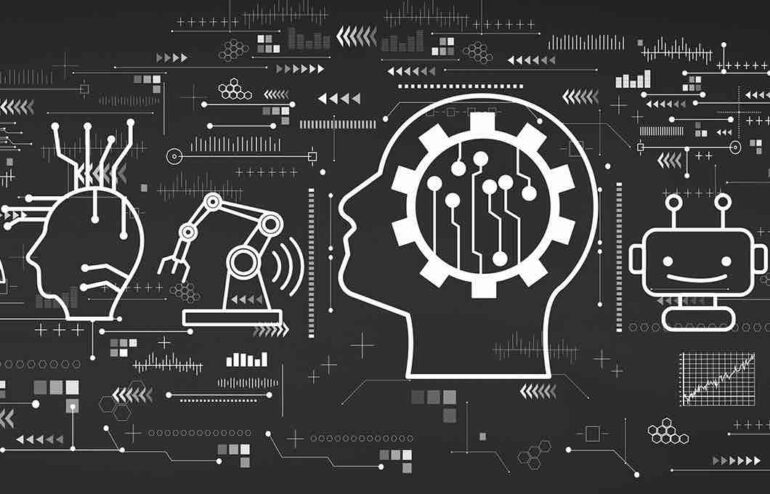TL;DR:
- In 2016, a survey by AI Impacts revealed that AI researchers assigned a mere 5% chance of human extinction due to advanced AI.
- A follow-up survey in 2022, involving thousands of machine learning researchers, reaffirmed the 5% median probability of catastrophic AI outcomes.
- Despite variations in question framing, the likelihood of human extinction remained consistent in subsequent surveys conducted in 2023.
- Researchers are divided on the potential outcomes of powerful AI, with some acknowledging both positive and negative possibilities.
- There is no consensus on the course of action to address AI’s risks, highlighting the uncertainty within the field.
Main AI News:
In a landscape filled with possibilities, thousands of AI experts find themselves grappling with the profound implications of their own creations, according to a recent study. In 2016, AI Impacts, a project dedicated to enhancing our comprehension of advanced AI development, conducted a survey among machine learning researchers. They probed into the timeline for the emergence of AI systems on par with human capabilities and the potential consequences of such a milestone.
The survey’s standout revelation was that the median respondent assigned a mere 5 percent chance to the idea of human-level AI leading to “extremely bad” outcomes, including the specter of human extinction. This implies that half of the researchers envisioned a higher probability of catastrophic consequences, while the other half considered it unlikely. This assessment was nothing short of unprecedented, as it raised the question of whether the very creators of this technology were contemplating a scenario where their innovations could spell the end of humanity.
In 2016, such apprehensions might have seemed far-fetched, given the nascent state of AI research. However, over the subsequent eight years, the landscape has shifted dramatically. AI systems have transitioned from being virtually inept to mastering complex tasks such as crafting college-level essays. Billions of dollars have been invested in the pursuit of superintelligent AI systems, bringing the once-distant prospect of dire outcomes into sharper focus.
Fast forward to the present, when AI Impacts released their latest survey results. The headline finding asserts that “between 37.8% and 51.4% of respondents assigned at least a 10% chance to advanced AI leading to outcomes as dire as human extinction.” This statistic, far from being an anomaly, appears to be an accurate reflection of the current sentiment within the field.
These findings challenge prevailing narratives about the risks associated with AI. Researchers’ opinions do not neatly align along a spectrum of optimism and pessimism. Surprisingly, many individuals who acknowledge the possibility of dire consequences also hold strong beliefs in the potential benefits of AI. A significant portion of researchers, 57.8 percent to be precise, acknowledges that extremely adverse outcomes, including human extinction, are at least 5 percent likely.
An illustrative figure from the study depicts respondents’ views on what might transpire if high-level machine intelligence becomes a reality. It portrays a landscape where both highly favorable and highly unfavorable outcomes are considered plausible.
The divergence in expert opinions extends beyond the potential risks; it encompasses the question of what actions should be taken. Indeed, the experts seem to be more divided on the course of action than on the existence of the problem itself.
The credibility of these results inevitably comes into question. The 2016 AI Impacts survey raised eyebrows, given that catastrophic AI risks were hardly a topic of mainstream discussion at the time. Skeptics wondered whether the researchers, who themselves were concerned about AI-induced human extinction, may have influenced the survey outcomes.
However, when the survey was rerun in 2022, involving thousands of researchers from top machine learning conferences, the results remained consistent. The median probability of an “extremely bad” outcome, akin to human extinction, remained at 5 percent. While there was significant variability among respondents, with 48 percent assigning at least a 10 percent chance of dire consequences, the consensus remained stable. Addressing criticism from 2016, the survey sought more nuanced responses about the likelihood of AI leading to “human extinction or similarly permanent and severe disempowerment of the human species.” Regardless of how the question was phrased, the responses fell within the 5-10 percent range.
In 2023, the survey introduced variations in question framing to mitigate potential biases. Despite these alterations, the results regarding human extinction remained remarkably consistent with the 2016 findings. This suggests that the initial survey outcome was not an anomaly, especially considering that, by 2023, the question of AI’s existential risk had gained widespread attention.
The most plausible interpretation of this data is that machine learning researchers, much like the general population, harbor profound uncertainties regarding the impact of powerful AI systems. They neither concur on the outcomes nor on the appropriate course of action. While most respondents advocate for increased resources and attention to AI safety research, there is no consensus on whether AI alignment should take precedence over other open problems in machine learning.
Conclusion:
The surveys reveal a significant level of uncertainty among AI experts regarding the potential risks and benefits of advanced AI development. This uncertainty could impact the market as businesses and investors may hesitate to commit resources to AI projects without a clear consensus on its long-term implications. Striking a balance between innovation and safety measures will be essential to navigate these uncertain waters successfully.

